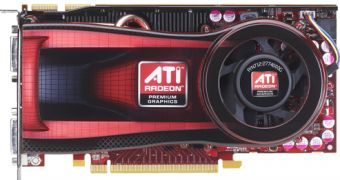Sunnyvale, California-based Advanced Micro Devices has announced today the expansion of its Radeon line of graphics cards with the introduction of the highly anticipated Radeon HD 4770. Designed for the entry-level and mainstream market, the chip maker's new solution takes advantage of the next-generation 40nm manufacturing process, being the first card on the market that sports this technology. With a price tag that is expected to settle at around $99, the new Radeon HD 4770 should become the alternative of those computer users who are looking for performance, but from a system that is within the budget.
“Consumer pressure in this economic downturn is shifting demand to lower prices and the price band around $100 has the highest demand and highest volume,” said Rick Bergman, senior vice president and general manager, Graphics Products Group, AMD. “AMD has responded with the launch of the ATI Radeon HD 4770, targeting this market with cutting-edge technologies like 40 nm processors, support for DirectX 10.1 gaming and GDDR5 memory. This strategy stands in stark contrast to the old 'trickle down' technology approach some still use to address this important segment.”
As far as technical specifications go, the Radeon HD 4770 is somewhat similar to the chip maker's Radeon HD 4830. The card is featured with 640 stream processors and comes with 512MB of 128-bit GDDR5 memory, clocked at 800MHz. Using a 40nm manufacturing process, the card's GPU has been clocked to 750MHz, higher even when compared to the company's HD 4850.
The new solution is expected to perform better than AMD's Radeon HD 4830 and even come close, in terms of performance, to the HD 4850. As for the continuous battle with NVIDIA, the Radeon HD 4770 is expected to compete with NVIDIA's GeForce GTS 250 and GeForce 9800GT. One of the greatest things about it is that it will provide PC users with a choice for a card that delivers performance in an affordable package.

 14 DAY TRIAL //
14 DAY TRIAL //